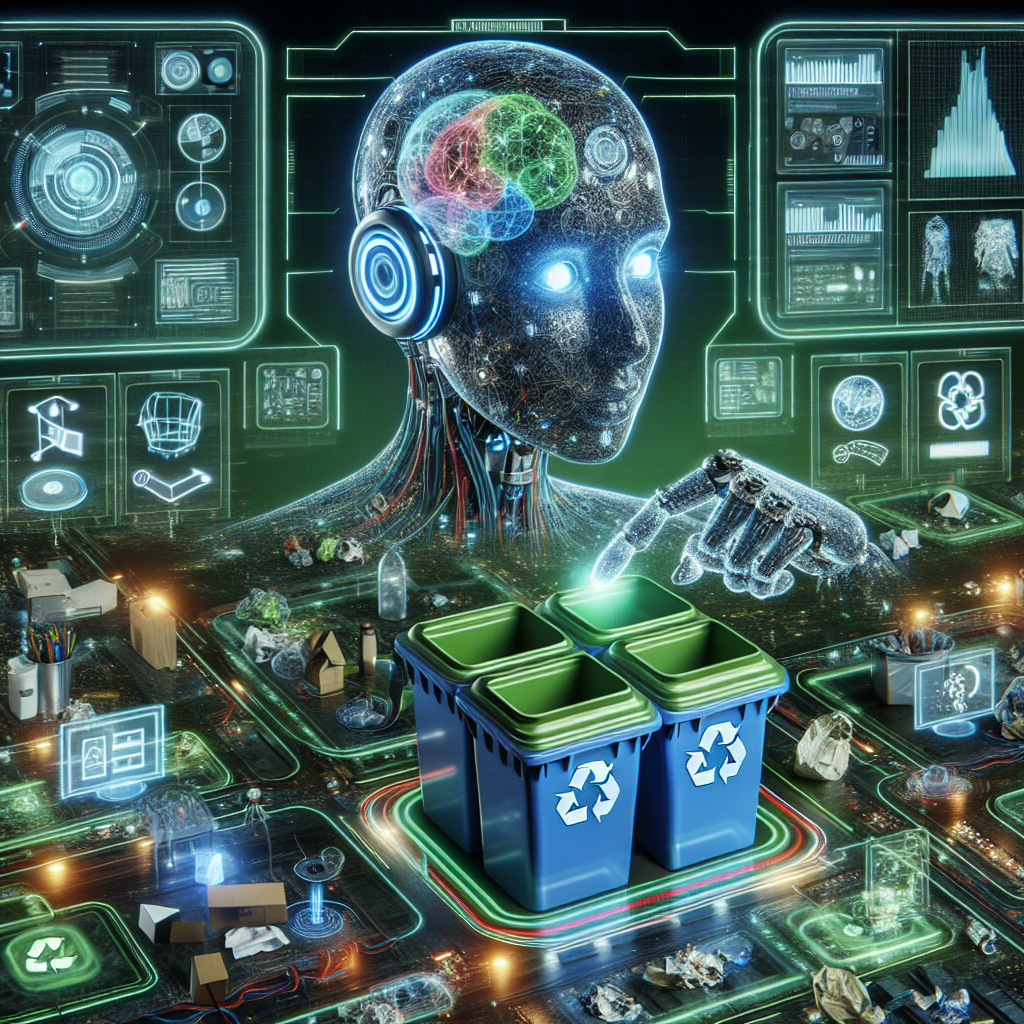In recent years, there has been a growing focus on finding innovative solutions for waste management, particularly in the realm of recycling. As the global population continues to increase, so does the amount of waste generated, leading to environmental challenges such as pollution and resource depletion. In response to these issues, many companies and organizations are turning to artificial intelligence (AI) to revolutionize waste recycling processes.
AI-driven solutions for smart waste recycling encompass a range of technologies and strategies that aim to optimize waste collection, sorting, and processing. By harnessing the power of AI, these solutions can help improve efficiency, reduce costs, and minimize environmental impact. In this article, we will explore some of the key AI-driven innovations in waste recycling, as well as their potential benefits and challenges.
One of the key areas where AI is making a significant impact in waste recycling is in waste sorting. Traditional waste sorting processes are often labor-intensive and time-consuming, leading to inefficiencies and inaccuracies. AI-powered sorting systems, on the other hand, can analyze and categorize waste items with a high degree of accuracy and speed. These systems use advanced sensors, cameras, and machine learning algorithms to identify different types of materials, such as plastics, metals, and paper, allowing for more efficient recycling processes.
One example of AI-driven waste sorting technology is robotic sorting systems. These systems use robotic arms equipped with cameras and sensors to identify and sort different types of waste items as they move along a conveyor belt. By using AI algorithms, these robots can quickly and accurately separate recyclable materials from non-recyclable ones, improving the overall efficiency of the recycling process.
Another area where AI is making a significant impact in waste recycling is in waste collection. Traditional waste collection methods are often based on fixed schedules and routes, leading to inefficiencies and missed pickups. AI-powered waste collection systems, on the other hand, can optimize collection routes in real-time based on factors such as traffic patterns, waste volume, and weather conditions. By using predictive analytics and machine learning algorithms, these systems can help reduce fuel consumption, lower emissions, and improve overall service levels.
In addition to waste sorting and collection, AI is also being used to optimize waste processing and recycling facilities. By using AI algorithms to analyze data from sensors and other sources, these facilities can better manage the flow of materials, optimize energy consumption, and improve overall operational efficiency. For example, AI can help identify opportunities for process optimization, such as adjusting processing parameters or scheduling maintenance tasks, leading to cost savings and improved performance.
Overall, AI-driven solutions for smart waste recycling have the potential to revolutionize the way we manage and recycle waste. By harnessing the power of AI, we can improve efficiency, reduce costs, and minimize environmental impact, ultimately creating a more sustainable and circular economy. However, there are also challenges and considerations to be aware of when implementing AI in waste recycling processes.
One challenge is the cost of implementing AI-driven solutions. While the technology has the potential to deliver significant benefits, such as improved efficiency and reduced waste, the initial investment required to deploy AI systems can be substantial. Companies and organizations will need to carefully evaluate the costs and benefits of implementing AI in their waste recycling processes to ensure a positive return on investment.
Another challenge is data privacy and security. AI systems rely on vast amounts of data to operate effectively, including information about waste composition, collection routes, and processing parameters. Companies and organizations will need to implement robust data privacy and security measures to protect this sensitive information from unauthorized access or misuse.
Additionally, there may be concerns about job displacement as AI-driven solutions are implemented in waste recycling processes. While AI can automate many tasks that are currently performed by humans, it can also create new opportunities for skilled workers in areas such as data analysis, system maintenance, and process optimization. Companies and organizations will need to carefully manage the transition to AI-driven solutions to ensure a smooth and fair transition for employees.
In conclusion, AI-driven solutions for smart waste recycling have the potential to transform the way we manage and recycle waste, leading to improved efficiency, reduced costs, and minimized environmental impact. By harnessing the power of AI, we can create a more sustainable and circular economy, ultimately helping to build a cleaner and healthier future for generations to come.
FAQs:
Q: What are some examples of AI-driven waste sorting technologies?
A: Examples of AI-driven waste sorting technologies include robotic sorting systems, optical sorting machines, and AI-powered conveyor belts. These technologies use sensors, cameras, and machine learning algorithms to identify and categorize different types of waste materials for recycling.
Q: How can AI help optimize waste collection processes?
A: AI can help optimize waste collection processes by analyzing data in real-time to optimize collection routes, schedules, and resource allocation. By using predictive analytics and machine learning algorithms, AI can help reduce fuel consumption, lower emissions, and improve overall service levels in waste collection.
Q: Are there any challenges associated with implementing AI-driven solutions in waste recycling?
A: Yes, there are challenges associated with implementing AI-driven solutions in waste recycling, including the cost of deployment, data privacy and security concerns, and potential job displacement. Companies and organizations will need to carefully evaluate these challenges and considerations when implementing AI in their waste recycling processes.

